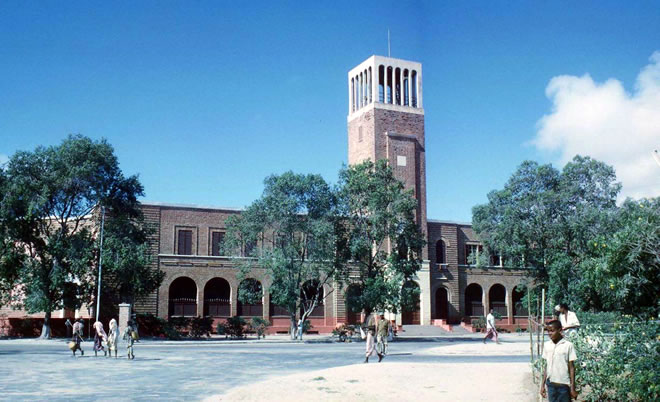The legal and political quandary surrounding the pending motion against the Speaker of the Lower Chamber of the Somali Federal Parliament, Mohamed Sheikh Jawari, takes our minds back to 1966 when the Parliament dealt with a motion calling for the removal of the Speaker of the National Assembly (Parliament). A motion is a formal proposal put forward for debate or decision in the House of Parliament. In fact, in1966, a motion moved by 51 MPs all from the ruling party, for reasons vaguely termed as ‘inefficiency’ in performing his functions, called for the removal of the Speaker of the National Assembly Ahmed Sheikh Mohamed Absiye.
Following the parliamentary elections of 1964, Absiye, from the electoral district of Berbera, was elected, in May, as Speaker of the National Assembly. The proponents of the motion invoked articles 55 and 57 of the Constitution and rules 74 and 2 of the Standing Committee (Giunta permanente) of the Assembly. In an effort to challenge the legality of the motion, the President of the Assembly suspended the extraordinary session of the Parliament convened to discuss the matter on 26 February, 1966, arguing that the constitutional provisions on which the motion was based did not apply to the removal of the President of the National Assembly. The matter was then referred to legal experts and to the Standing Committee of the National Assembly, the body competent to decide on conflicts of opinion concerning interpretation and application of the Standing Rules. The Board deliberated that articles 2 and 74 of the Standing Rules (Regolamento Interno) did not preclude the National Assembly discussing the motion and acting upon it as necessary.
In February, by a joint decision taken by the Central Committee of the Lega dei Giovani Somali and its parliamentary group, the Speaker was expelled from the party for ‘failing to abide by the party’s rules’ (Somali News February 10, 1966) a clear reference to his objection to submitting the resignation demanded by the party.
Soon after the legal arguments were put to rest, the National Assembly was convened in ordinary session on March 2, 1966, and the motion was one of the items on its agenda. The National Assembly, chaired by the beleaguered Speaker himself, passed the motion during its session of March 4 by 85 votes in favour, 33 against and 1 abstention. (Somali News March 4, 1966) Voting was by way of secret ballot. Apparently, all Lega MPs voted compact in favour of the motion, while the negative votes mainly came from the opposition. This was the first time a President of the National Assembly in exercise was voted out of office. The parliamentary group of the Somali Democratic Union (SDU), an opposition party, accused the Prime Minister of the time, Abdirazak, who was also the secretary general of the ruling party, of orchestrating the move which precipitated the Speaker’s removal. It was not clear why it should be so urgent to convene an extraordinary session of the Parliament just to remove the Speaker and expel him from the party at a time when the parliamentary investigation commission was still busy investigating him for alleged maladministration. The investigations carried out by the parliamentary commission (under the chairmanship of Hon. Abdi Bulle) appear to have revealed a black hole between Sh.So.400,000 and Sh.So.490,000 in the National Assembly’s budget.
The removal of Absie was the highest-profile case since independence involving the head of one of the top three institutions of the State, and understandably left Absiye feeling as if he had been singled out in a country full of inefficient and corrupt politicians. Of course, Absiye’s administration left enough room for criticism, his performance in office, his leadership qualities and style contrasted starkly with the ethical management displayed by Aden Abdulla, during his tenure as President of the National Assembly between 1956 and 1960.
With the forced departure of Absiye, the top three positions (Presidency of the Republic, Presidency of the Parliament and Premiership) all fell in the hands of southerners. Egal, belonging to the same clan and sub-clan as the outgoing President of the Parliament, seemed to be the natural candidate to take up the job according to the unwritten tribal formula followed in filling vacated elective posts. However, there was a requirement Egal could hardly fill, as a member of the SNC he belonged to an opposition party, and the Lega wanted for the Presidency of the National Assembly someone from their party.
On March 8, Sheikh Muktar Mohamed Hussein, one of the 3 Vice-presidents of the National Assembly, was elected to replace Absiye with a majority of 69 votes. His closest contender, Mohamed Haji Ibrahim Egal, of the SNC, received 42 votes (Somali News March 11, 1966).
A brief narrative of the differences between the prevailing political ambience in 1966 and the situation in 2018 shows the following:
Firstly, in 1966 Somalia was a united country with fully functioning institutions and strong central government.. Today, the country is fragmented and without a central government lacking the capability to exercise its control and jurisdiction over the territory as a whole. Since 1991 the world still continues to refer to Somalia as Failed State.
Secondly, in 1966 foreign countries had no any significant influence in the internal affairs of the Somali Republic. The Arabs of the Persian Gulf were dreadfully poor and insignificant as state entities to be able to spend lavishly, as the case is today, to influence the outcome of elections or removal of top position holders of the country.
Thirdly, unlike today, in the 60s, the lawmakers conducted their business within the purview of the rule and regulation of the Parliament.
Today we are continuously witnessing MPs and even, at times members of the government, trading through the media abusive language or lunching scathing attacks on the Speaker of the Parliament.
M. Trunji
trunji@yahoo.com
by M. Trunji





























